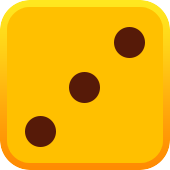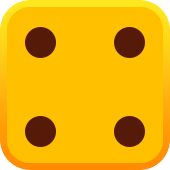












Poker looks messy until you learn the ladder that governs every showdown. This guide explains the full order, how ties resolve, and which starting cards deserve aggression. You’ll get concrete rules, compact tables, and checklists you can apply the next time chips are in the middle. Read it once, keep it nearby, and your decisions will tighten up fast. Master the map and the poker rules winning hands start telling clear stories instead of noisy guesses at the felt.
A 52-card deck produces a fixed hierarchy that decides every pot. Learn the rules poker hands and the terms for poker hands first, then practice recognizing categories at a glance. Think in hand rankings: evaluate category strength, compare key ranks inside the category, then use kickers. The more automatic this sequence becomes, the faster and more accurate your decisions will be.
|
Tier |
Category |
Example |
Dominates |
|
1 |
Royal Flush |
A♠K♠Q♠J♠10♠ |
All others |
|
2 |
Straight Flush |
9♥8♥7♥6♥5♥ |
3–10 below |
|
3 |
Four of a Kind |
Q♦Q♠Q♥Q♣+7♣ |
4–10 below |
|
4 |
Full House |
T♠T♦T♥+9♣9♦ |
5–10 below |
Rarity drives rules for casino poker hands value: the fewer combos that exist, the higher the rank. Board interaction matters too—some holdings keep outs and redraws on many turns and rivers. Position amplifies strength because you act last and control pot size. Finally, domination counts: hands that make top pair with superior kickers earn more and lose less.
When categories match, compare the highest internal rank, then the next, and only then kickers. For flushes, line up the five cards and compare one by one from the top. For two pair, check the higher pair, then the lower pair, then the fifth card. Memorize this poker hands rule: category → primary ranks → kickers, in that exact order.
Here is the authoritative ladder used to judge rules poker winning hands at standard tables. It lists all hands for poker from strongest to weakest and highlights how ties resolve. Study the edges between neighboring ranks; that’s where most chips change owners. Knowing which patterns are the best combinations lets you price bets precisely and avoid thin calls.
|
Rank |
Pattern |
Core Comparison Rule |
|
1 |
Royal Flush |
Identical only |
|
2 |
Straight Flush |
Higher top card wins |
|
3 |
Four of a Kind |
Higher quads; then kicker |
|
4 |
Full House |
Higher trips; then pair |
|
5 |
Flush |
Highest five, top-down |
|
6 |
Straight |
Higher top card |
|
7 |
Three of a Kind |
Higher trips; then kickers |
|
8 |
Two Pair |
Higher pair → lower pair → kicker |
|
9 |
One Pair |
Pair rank → K1 → K2 → K3 |
|
10 |
High Card |
K1 → K2 → K3 → K4 → K5 |
This hand is A-K-Q-J-10 all in one suit and beats everything without exception. Because suits have no rank, two identical royal flushes tie only when five board cards form it. No kicker is ever consulted. Treat it as the unbreakable nuts the instant you see it.
Five consecutive cards in one suit, such as 7♣8♣9♣10♣J♣. If two appear, the one with the higher top card wins; J-high beats 10-high. The wheel (A-2-3-4-5 suited) counts as 5-high. This holding crushes most textures and severely blocks draw combos.
Four equal ranks plus a side card, for example 6♠6♦6♣6♥+A♦. Higher quads win; if the board shows the four, the kicker settles it. On paired boards, equity locks early and opponents have few redraws. Size for value but respect spots where the board allows only chopped outcomes.
Trips plus a pair, such as J-J-J with 4-4. Compare the three of a kind first; if equal, compare the pair. On draw-heavy textures, push value before scary rivers shrink calling ranges. Beware boards where the community cards already give everyone a strong default.
Any five cards of the same suit not in sequence. Compare top card first, then proceed downward until a difference appears. Nut flushes (ace-high) print more value and avoid reverse-implied-odds disasters. On paired or four-flush boards, tighten up unless you hold blockers.
Five ranks in order with mixed suits, e.g., 9-8-7-6-5. The higher the top card, the better; the wheel is 5-high, not ace-high. Straights are winning sequences versus trips and below but lose to any flush or better. Be cautious on two-tone or paired boards where upgrades against you are common.
Three cards of the same rank plus two kickers. Sets made from a pocket pair usually outperform trips made by pairing the board because they keep two live kickers. Break ties by trips rank, then highest and second kicker. Some chart packs label scenarios succinctly as “Poker hands” to tag examples.
Two different pairs plus any fifth card, like K-K and 7-7 with a 9. Compare the higher pair first; if equal, compare the lower pair; then the kicker if needed. Multiway pots punish weak kickers, so price protection on wet boards. Rivers that pair the board can upgrade you to a full house—value bet accordingly.
One pair with three kickers, such as A-A with Q-8-3. The kicker stack often decides small and medium pots. Against tight 4-bets, fold middling pairs that play poorly out of position. On safe runouts, thin value bets with top pair/top kicker are profitable.
Five unmatched cards where the highest card governs. Compare top card, then descend until a difference appears. High-card bluffs rely on position, blockers, and credible board stories. Use these holdings to attack capped ranges rather than to pay off big rivers.
Pre-flop discipline shapes everything that follows. Start with a solid core—the best poker hands—and scale aggression by position and stack depth. Premiums win more showdowns and realize equity cleanly, while dominated junk hands leak chips. Use the grid below as a default, then adjust to table tendencies. Explore the best slot online games available at Lucky Tiger Casino and enjoy high-quality gameplay.
Premium pairs and big Broadway combos generate clean value in most seats. Suited versions gain playability due to back-door draws and nut potential. Offsuit big aces still crush unpaired Broadway but flop fewer strong draws. With deeper stacks, widen suited connectors and suited aces that can make hidden poker hands monsters.
|
Hand |
Suited? |
Baseline Strength |
Default Line |
|
A♠A♦ |
N/A |
Premium |
Open/4-bet for value |
|
K♠K♥ |
N/A |
Premium |
Open/4-bet for value |
|
Q♣Q♦ |
N/A |
Premium |
Open/3-bet for value |
|
A♣K♣ |
Yes |
Premium |
Open/3-bet; mix calls |
|
J♠J♥ |
N/A |
Strong |
Open/3-bet; caution OOP |
|
A♦K♥ |
No |
Strong |
Open/3-bet; fold vs nit 4-bets |
|
T♠T♦ |
N/A |
Strong |
Open; set-mine vs big 3-bets |
|
A♠Q♠ |
Yes |
Strong |
Open/3-bet late seats |
|
9♠9♥ |
N/A |
Good |
Open; call with odds |
|
A♦J♦ |
Yes |
Good |
Open; prefer position |
Raise when your hand dominates likely callers and the board favors your range. Call when implied odds are high and reverse-implied odds are low. Fold early versus tight aggression when out of position with marginal kickers. Use this pocket checklist at the table.
Lock the order in your head by linking shapes to categories and drilling recall. Create a one-page sheet that maps royal flush to high card with arrows for tie logic. Practice spaced retrieval: quick quizzes beat marathon cramming. Time yourself from flop to answer so the sequence becomes instinctive under pressure.
Visuals compress rules poker hands into decisions you can execute fast. Build a single sheet that shows the hierarchy, tie-break arrows, and kicker priorities. Color zones help your eyes jump to actions without overthinking. Keep the chart by your monitor or in your wallet for live sessions.
|
Color |
Meaning |
Quick Action |
|
Green |
Top tier |
Bet/raise confidently |
|
Yellow |
Medium |
Control pot size |
|
Red |
Thin/Bluff |
Proceed only with fold equity |
Rehearsal under low pressure cements patterns better than reading alone. Use play-money tables or micros to test automatic recognition and tie-breaks. Set one focus per session—category ID, kicker logic, or board textures—then review hands afterward. Treat these reps as drills inside poker hands games, not as results-oriented gambling. Before you play, make sure to read the terms on the bonus page so you know the wagering requirements.




